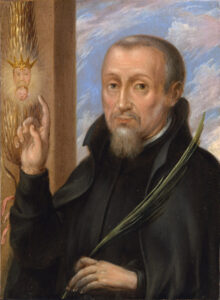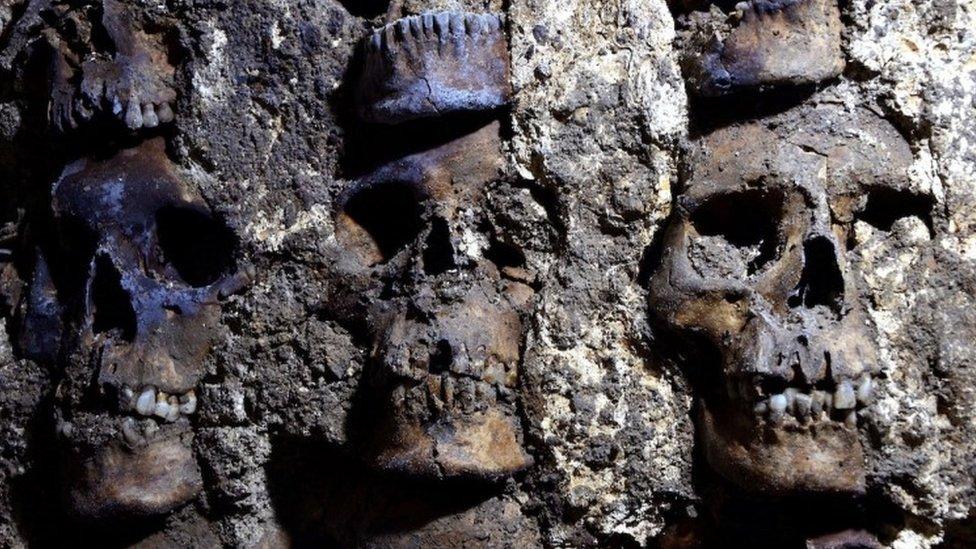
Step inside a Viking longhouse and discover what the Vikings ate for dinner. Experience their world of smoke, salt and survival — complete with an archaeologically inspired mutton and honey recipe straight from the hearth.
The Hearth And Heart
The longhouse heaved with invisible life, though no one stirred. Smoke curled beneath blackened rafters, heavy with the smell of damp wool, rendered fat, and brine. The fire crackled in its stone pit—a molten heart pulsing against the darkness.
Shadows flickered on the timber walls as women tended iron cauldrons and children huddled for warmth, their shapes blurred by smoke. The walls dripped with moisture, glinting in the firelight like amber tears.
Outside, the fjord wind clawed at the turf roof. But here, in this womb of wood and smoke, was something more primal than comfort. While the icy air danced outside, the Viking families felt warmth and comfort here.
Here was survival, measured in shared heat, in bubbling barley porridge, in salted cod rationed through the starving months.
This was endurance, one freezing day at a time, one long winter at a time. A space where survival and family were knitted together.

The Hearth Both Fed And Nurtured
The hearth was everything. Its coals glowed through the darkest winters, a thread of life that could never be allowed to die. In the ash of excavated hearths from Borg and Oseberg, archaeologists have found layers of soot, seed and fat — years of meals fused into one blackened memory.
A time capsule filled with the stories of their lives.
This was where the day began and ended: births, deaths, songs and quarrels all took place by that same fire. To lose it was to lose warmth, light and protection itself. There was no doubt a cosiness where families would unwind and nurture themselves.
Women tended the fires, salting meat and stirring broth while keeping the children safe. They transformed barley, fish, and roots into meals that could sustain a family through months of darkness.
The Hearth Changed Moods And Moved With Time
In Norse myth, the hearth was guarded by household spirits and tied to ideas of fate and protection. A sacred centre even in ordinary life.
By day, the house smelled of broth and damp straw. By night, it thickened into woodsmoke, burning fat, the faint sweetness of mead. Comforting and familiar.
They ate close to the ground, crouched by the light of the embers. Dishes were few: carved wooden bowls, horn cups, and a single knife shared between them.

The Taste of the North
The Viking diet was plain but not joyless. They ate to survive, but also to gather. Finds from Hedeby, Jorvik, and Iceland reveal traces of barley, oats and rye; fish bones mixed with herbs; and charred grains clinging to pots.
Stews were simmered and grey, thick with oats, tasting of iron and smoke. Occasionally, there was luxury: a spoonful of honey, a handful of berries, a feast when the gods — or the weather — had been kind.
The longhouse fire smouldered all day as children fed it peat and driftwood. Women stirred heavy pots, sweat dripping down their faces, while the hissing fat rose to the surface. This was endurance turned into sustenance.
Try a Viking recipe yourself.
From the Hearth: Mutton with Herbs and Honey
This dish is based on evidence from cooking residues and Viking-age poetry that mention sheep, honey and herbs. The recipe below is a modern reconstruction, inspired by finds from Scandinavia and Iceland rather than a preserved original.
Ingredients
- 500 g mutton or sheep meat (lamb for a milder taste)
- 1 onion, roughly chopped
- 1 tablespoon honey
- A splash of weak ale or water
- Thyme, mustard seed and a pinch of salt
Method
Brown the meat over an open flame until it hisses and begins to glaze. Add the onion, herbs, and liquid; cover the pot and simmer slowly. The honey darkens to a smoky gold, clinging to the pot and to the fingertips of whoever tastes it first.
“It is not sweetness,” one old poem says, “but strength disguised.”
Fire and Fellowship
Around the cookfire, the world shrank to the circle of light. Men sharpened blades. Women mended nets. Stories were told — of Thor’s hammer, of sea monsters, of ancestors who watched from the smoke. When the last embers dimmed, someone always stayed awake to stir them. Even sleep happened in shifts, like rowing.
Excavations at Jorvik show constant use of fire: soot layers, split bones for marrow, and burnt fish scales. In the ash, archaeologists sometimes find traces of grain offerings, suggesting that even meagre meals were shared with the gods to give thanks for survival.

Ashes and Memory
When archaeologists sift the remains of those longhouses, they uncover stories in the soil and sootash. Barley speaks of lean winters. Fat residue marks feasts.
The Viking cookfire was not romantic. It was smoke in the lungs, blisters on hands, and hunger staved off one more night. Yet through it, they built an empire of warmth against the unrelenting cold.
And even now, beneath Norwegian soil, the ghosts of their fires still sleep — waiting to be stirred back to life.
Help Keep History Alive
If you like what we do, then consider visiting our new Ko-Fi page to get insights into the stories and how we want to keep history alive.








